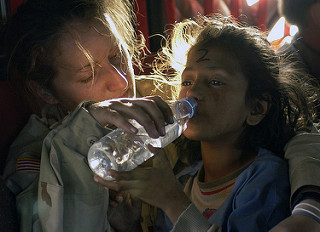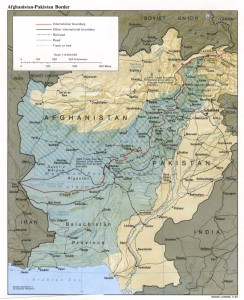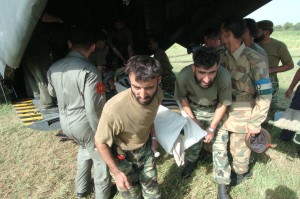What Do We Do With Disaster? Remembering the Afghanistan/Pakistan Earthquake

Nearly two weeks ago, on October 26th, Afghanistan was hit by an earthquake. The earthquake, falling between 7.5 and 8.1 on the Richter scale, caused widespread damage across northern Afghanistan and Pakistan. At least 260 have been reported dead, including 12 young girls killed in a panicked rush to escape an Afghani school building. Thousands in the region have also suffered severe damage to their homes, leaving many without shelter over the past two weeks.

International response has been limited at best. Relief efforts are being carried out by the Afghani and Pakistani governments, but very little help has been given by the international community. While the Pakistani government works on an in-depth plan of action, distributing “44,046 tents, 46,112 blankets, 6,494 plastic mats, 880.26 tons of food packs, 14,000 tarpaulins, bottled water 14 tons, 49 water filter plants, 116 generator sets and 27 tons of medicines”, little to no support has come from other national governments or the United Nations. While both the United States Department of State and UN Secretary-General, Ban Ki-moon stated that they “stand ready” to assist with relief efforts, no actual action has been taken by either party. In fact, the US Department of State’s daily press briefings mention the disaster only once. Since the 26th, while both Afghanistan and Pakistan have been discussed, there was no mention of the earthquake or its repercussions.
Non-Governmental Organizations have been more involved in the relief. Doctors Without Borders responded with “a mass-casualty plan … almost immediately set in motion, with all staff following specific protocols for triage and lifesaving care for severely wounded patients.” However even the simple task of moving supplies is not as straightforward as it may seem; “One of the main challenges for relief efforts is delivering relief to some of Afghanistan’s more remote regions.” a report from the Red Crescent (partner to the Red Cross) explains, “The district of Sawkai in Konar province is one area where the earthquake caused huge damage. It is surrounded by high mountains and deep valleys… Travelling from villages to the centre of the district takes hours.”. As temperatures in the region drop, the people of these villages, especially children, are put at high risk from passing the night unprotected in the cold of approaching winter.

So, how exactly should the international community be responding to these types of disasters? Who is responsible for ensuring that relief efforts such as these are sufficient to provide people with the medical care and supplies they need? The governments of the nations in question would seem to be best equipped for initial response and analysis of the situation, but what if their efforts are not enough? NGO’s do a lot of essential emergency response on the ground, but they are often restricted by the lack of resources that plagues all non-profit organizations. National governments and international organizations, such as the UN and its many branches tend to have a far greater bank of resources, but cutting through all that red tape often takes time that earthquake survivors simply do not have. Each night that Afghani children spend out in the cold increases the risk of them falling ill while beyond the reach of any sort of medical attention. And while getting food, tents, and medical supplies into the outer reaches of the Himalayas is by no means easy, it is also not impossible. The Pakistani government has flown 94 helicopter sorties to transport these supplies to where they are needed, but most NGO-workers on the ground do not have access to helicopters, and so some children are left to last the night as best they can.
Perhaps worse still, it seems that most of the world has already forgotten. As is often the case, the October earthquake got its day or two of fame, and then vanished from the international community’s eye. This is a second disaster. If a relief effort is considered a relevant and newsworthy, governments will be inclined to place it higher on their list of priorities (they’re always sorely in need of the good press). Had there been a streamlined, organized response including Afghani and Pakistani governments, aid organizations, and other national and international governing bodies, this could have been a different story. With more helicopters supplied by foreign governments or the UN, perhaps we wouldn’t have left villagers wondering two weeks after the quake if supplies will reach them before winter’s first snow isolates them completely. Shelter and medical equipment could have been spread across the affected areas within a matter of days. A solution might have been put into place almost as quickly and efficiently as the media lost interest in the problem, and, most importantly, we could get those kids in out of the cold.
